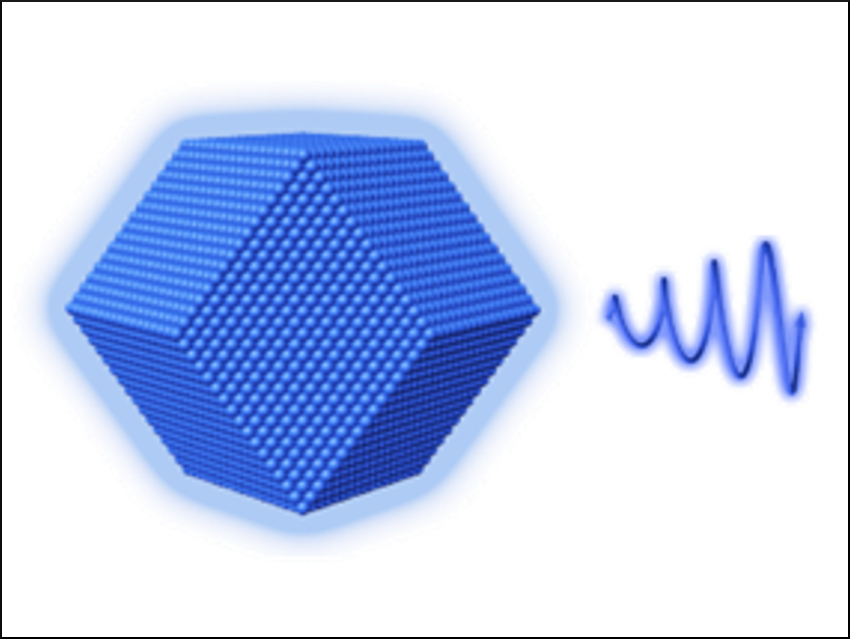Circularly polarized luminescence (CPL) is a phenomenon in which chiral luminescent materials emit right- or left-handed circularly polarized light. CPL-active materials are useful for optoelectronic applications, e.g., in optical storage and 3D displays. It is, however, still challenging to achieve CPL-active materials which have both a high luminescence efficiency and large luminescence dissymmetry factors (glum), i.e., effective polarization.
Pengfei Duan, National Center for Nanoscience and Technology and University of Chinese Academy of Sciences, Beijing, and colleagues have synthesized a CPL-active chiral zeolitic imidazolate framework (ZIF) using a ligand-exchange approach. The team designed chiral emitters based on a binaphthyldiamine moiety with 4‐(10‐phenylanthrancen‐9‐yl)phenyl and imidazole groups. Either the R– or the S-enantiomer of these ligands was then mixed with Zn‐based ZIF‐8 nanoparticles. A ligand exchange between the chiral emitters and the 2‐methylimidazole on the nanoparticles resulted in chiral, emissive ZIF nanoparticles.
Compared with the same chiral emitters in dilute solution, the chiral ZIF shows an increase of glum by one order of magnitude, as well as an enhancement of luminescence efficiency. The material avoids a major trade-off usually observed with CPL-active materials, where large luminescence dissymmetry factors lead to a suppression of luminescence efficiency. According to the team, the improved properties can be explained by the well‐ordered arrangement of the chiral emitters on the ZIF.
- Enhanced Circularly Polarized Luminescence from Reorganized Chiral Emitters on the Skeleton of a Zeolitic Imidazolate Framework,
Tonghan Zhao, Jianlei Han, Xue Jin, Yan Liu, Minghua Liu, Pengfei Duan,
Angew. Chem. Int. Ed. 2019.
https://doi.org/10.1002/anie.201900052

![Synthesis of [c2]Daisy Chains via Mechanochemistry](https://www.chemistryviews.org/wp-content/uploads/2025/04/202504_RotaxanesWithSolidStateMechanochemistry-125x94.png)

